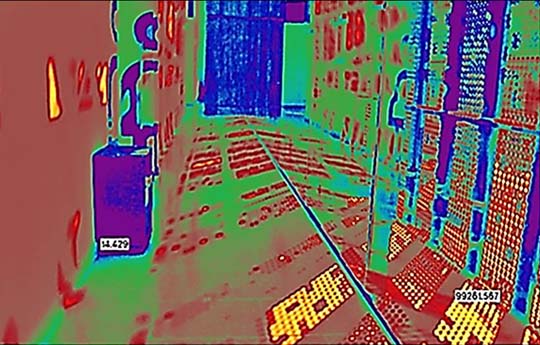AGRARIAN, ENGINEERING AND MATERIAL SCIENCES
Sustainable buildings to make good use of sunlight
Methods to make good use of natural lightning in outdoor, indoor and transition spaces for the welfare of people and the reduction of energy consumption.
By Andrea Pattini*
The main characteristic of natural lighting in sunny climates, particularly in arid zones, is that it reaches high levels throughout the year. In Mendoza, for instance, in sunny summer middays, the values of natural light on a horizontal surface reach 120.000 lux and 65.000 lux in winter.
Considering that it is necessary to have 500 lux to perform reading and writing tasks (office, classroom activities, etc.), it possible to state that with a proper design that figure is reached at least 80% of the year in indoor spaces in daytime hours.
Outdoor natural lightning is therefore enough to be used as the main indoor light during working hours for at least 80% of the year without the need to turn on artificial light. This will depend on the design that will enable controlled entry of natural light that will ensure enough quantity without risks of glare.
To make good use of natural light as a source of day light begins with the knowledge of availability, quantity and duration of a certain sunlight region. The starting point is to measure it systematically and with the proper equipment in order to make progress, practical applications (like design and dimensioning of solar systems, lightways, windows and solar control elements) and research (relationship models between solar irradiance and illuminance) . For this reason, at the CCT CONICET Mendoza, there is a station of global and diffuse irradiance and illuminance station that works according to the protocol of the International Network of Natural Lighting Measurements of the International Daylight Measurement Program Commission Internationale de l’Eclairage (IDMP-CIE). There is information available in real time. Besides, other land information allows us to evaluate possible errors and make adjustments when satellite climate database are used.
The objective of our research into natural lightning is to develop and apply regional technologies of natural lightning systems. That runs in parallel to other studies on new materials or technologies for local a local application. It is worth mentioning that one central aspect is the optical characterization and energetic performance of window systems and solar control elements. Regarding this, we work with simulators and measurement equipment so as to let industry know about the energetic performance of their developments and optimize them to offer product testing to the sustainable construction market.
The most sustainable use of natural lightning is as a light source, that is to say, as an indoor space that has windows or access to natural light from the outside that generally does not need to have artificial light on during the daytime. If the access to outdoor natural light is properly designed (orientation, design and technology of the window and solar control elements), this is possible. In the places that do not have walls with windows that face the outside, natural light enters through transportation and/or redirection systems called lightways or through the most general and innovative natural lightning systems. In order to have an integral design, there are some thermal aspects linked to the entry of natural light that must be taken into consideration. Thus, they will optimize the beneficial thermo-lighting contributions in winter and summer with the correct provision of shadows. At first, it is always necessary to study the local climate, natural light technologies and visual and non-visual impact of the natural light on people.
*Andrea Pattini is a CONICET principal researcher at the Instituto de Ciencias Humanas, Sociales y Ambientales en Mendoza (INCIHUSA-MENDOZA) [Institute of Social, Human and Environmental sciences in Mendoza]. She has as PhD in Exact Sciences and Technology, Light and Vision Orientation. Pattini teaches Natural Lightining in postgraduate courses at the Universidad Nacional de Tucumán, Universidad Tecnológica Nacional-Fac. Reg. Mendoza, Universidad Nacional de La Plata and the Universidad de Chile. In 2007 she received the +Guón Prize given by the Fundación del Interior en Mendoza for his contributions to the design of natural lightning at schools.
Research team:
– Lorena Córica.
– Leandro Ferrón.
– Roberto Rodríguez.
– Cecilia Lasagno.
– Ernesto Betman.
– Juan M. Monteoliva.
– Ayelén Villalba.
– Julieta Yamín.
– Maureen de Gastines.
